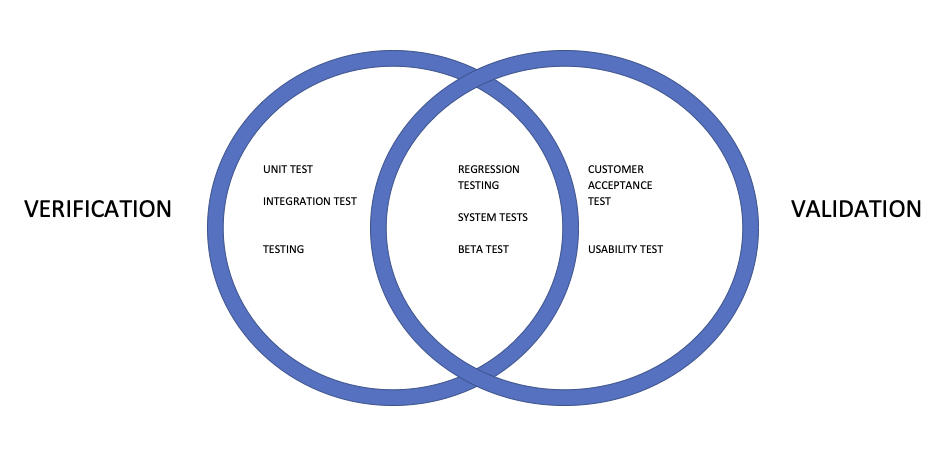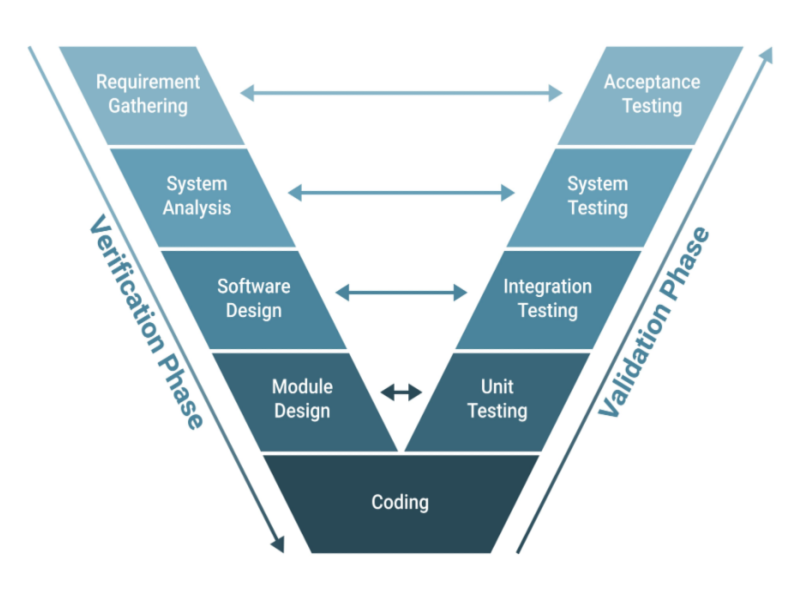Verification and Validation are common processes contained within a quality management system. They are independent of each other (and can be carried out separately) but are commonly found as part of a harmonious set of methods.
Verification and Validation have different purposes, which are:
- Validation assures that a product or service meets the needs of the customer.
- Verification evaluates whether a product or service complies with a requirement (be that a technical requirement, specification or legislation/regulation).
Whilst there are key differences between Verication and Validation, there is often much confusion regarding them, such as;
- What each refers to
- Specific processes and methods
- Who carries each one out?
- When is each required?
In today’s article, we’ll be trying to dispel that confusion; we’ll be covering:
- What is Verification and Validation
- Verification and Validation definition
- Verification definition
- Types of Verificaiton
- Verification processes and activities
- Validation definition
- Types of Validation
- Validation processes and activities
- Verification and Validation differences
- The Engineering V diagram
- ISO Standards and Verification and Validation
- Benefits of Verification and Validation
- Issues with Verification and Validation
What is Verification and Validation
At the heart of Quality Management is the desire to deliver a quality product to your customer, in other words, assurance. In simple terms, to do that, you must ensure your product:
- Is what the customer wants
- Meets the customer’s requirements
By addressing these aspects, Verification and Validation should be a fundamental component of your Quality Assurance method within your business.
Used correct the methods:
- Ensure products meet requirements
- Reduce defects
- Ensure customer (and stakeholder) satisfaction through ensuring quality standards and expectancies are met
Verification and Validation definition
As we described in the introduction, there is often much confusion between the two methodologies.
Verification and Validation are often intertwined, referred to together (sometimes interchangeably) and sometimes thought of as a single process.
Let’s dispel that last rumour. They are two distinct entities.
- Verification – Is it compliant to criteria (such as requirements).
- Validation – Does it meet the intended use (be that of the customer or specified stakeholders).
To clarify further, let’s look at an analogy through the example of building a house.
In this case:
- Validation would be used to ensure that you are building the right house (meeting the user’s needs)
- Verification ensures you are building the house correctly (meeting specifications, regulations etc.).
You can fail both or one on its own.
For example, if you’ve failed to identify what the customer wants, you can fail validation but still build it correctly, so pass Verification.
If you build what the customer wants but fail to comply with regulatory requirements, you can pass validation but fail Verification.
Let’s now look at some more detailed definitions and characteristics of each.
Verification Definition
Verification is typically reliant on requirements, and as such, processes such as requirements capture and analysis feature early on in the process.
Requirements may be elicited from several areas, including
- The user
- Equipment providers
- Standards (such as ISO)
- Regulatory bodies
Whilst verification can take place throughout the product lifecycle; certain phases may have specific characteristics.
Let’s have a look at some specific moments where Verification may take place:
- Verification may extend across various qualification steps from requirements qualification and design qualification through to integration and build.
- Through the development phase, verification procedures involve performing a special test to model or simulate a portion, on the entirety, of a product, service or system, then performing a review or analysis of the modelling results.
- During post-development phases, we may repeat verification tests to ensure products continue to meet requirements.
Verification will usually involve various groups of stakeholders, including quality functions, Engineering, Customer, 3rd parties auditors.
Types of Verification
There are four key types of Verification
- Inspection – physical inspection of the product
- Demonstration – Use of system to demonstrate compliance with requirements
- Test – use of the product in a test environment to obtain Verification
- Analysis – use of analytical methods to demonstrate compliance
Verification process and activities
There are three core steps in the verification process.
1/ Planning
- Establishing levels of Verification vs requirements
- Clearly defining verification tasks (including how they align with requirements)
- Establishing resources to undertake the task
- Establishing configuration/environment needs required to undertake the task
- Capturing the sequence of events
2/ Execution
- Executing the verification plan
3/ Reporting
- Reporting the results of the verification plan to appropriate stakeholders
Validation Definition
Validation ensures a product or service meets the needs of the user. It usually involves several forms of testing and working with the end product.
During Validation, we establish evidence that gives a significantly high degree of assurance that a product complies with requirements.
Types of validation
There are various types of validation which could be used depending on circumstances and products. These include
- Prospective validation – driven by decisions made ahead of new product introduction
- Retrospective validation – process validation relating to a product already being distributed
- Full-scale validation
- Partial validation – carried out in order to validate changes on previously moderated products
- Re-validation – validation occurring after changes in processes or inputs
- Concurrent validation – utilised to confirm processes perform as expected, based on data captured during real use.
Validation process
Common steps that are usually involved in a validation phase include:
- Acceptance testing
- System integration testing
- Component testing
- Unit testing
Key differences between validation and Verification
As we’ve shown, validation and Verification are not the same things. They serve different purposes and are conducted differently.
So what are the key differences?
| VERIFICATION | VALIDATION |
| Are we building the product right? | Have we built the right product |
| Involves checking documents, designs | Involves validating product(s) |
| Involves individual elements of the final product (i.e. components, sub-assemblies, code.) | Involves the final product |
| Utilises methods such as inspections, reviews Checks to ensure specifications have been met | Utilises methods such as testing, validation of finished product |
| Finds non-conformance early in the lifecycle | Finds misalignment between product and user |
| Comes before Validation | Comes after Verification |
| Typically undertaken by Quality Assurance, involves Engineering teams and business stakeholders | Typically undertaken by Quality Assurance, Business and user community |

The Engineering V diagram
Verification and Validation are often illustrated through the Engineering V diagram that can be seen below.

ISO Standards and Verification and Validation
Unsurprisingly Verification and Validation are implied within a variety of standards.
Intrinsincly part of 9001: “Confirmation through the process of objective evidence that specified requirements have been fulfilled”. Businesses should pay close attention to how they implement V&V in order to comply with the requirements of applicable certifying standards that are relevant to their business.
Benefits of Verification and Validation
Executed correctly, the benefits of Verification and validation are numerous. Benefits include:
- Ensuring that the produced product meets requirements
- Reduces the need for costly rework at the end of the development cycle
- Ensures the product meets the expectations of the end user/customer
- Integrates assurance processes throughout the development of a product.
Issues with Verification and Validation
Verification and Validation face numerous potential issues through their implementation; these include:
- Identifying goals upfront and demonstrating through the process that these have been met
- Cost of V&V (i.e. resources, equipment, etc.)
- Misunderstanding the purpose of the process and therefore failing to achieve percieved goals
- Failing to capture effective requirements which can be utilised by the process
- Terms are not clearly defined, and confusion about how to execute the processes
- Dependencies that are not fully understood
- Insufficient time spent on planning.
Summary
Verification and validation (sometimes referred to as V&V) are a set of separate processes which combine in order to validate that a product (or other output) meets requirements and specifications while also meeting its purpose.
Verification and Validation should be an intrinsic part of your assurance program within your quality management system.
Perhaps you have experience in either planning or executing V&V processes. If so, and you have lessons or experiences you’d like to share, we’d love to hear from you.
As ever, you can reach us via Twitter or the comments section below.
